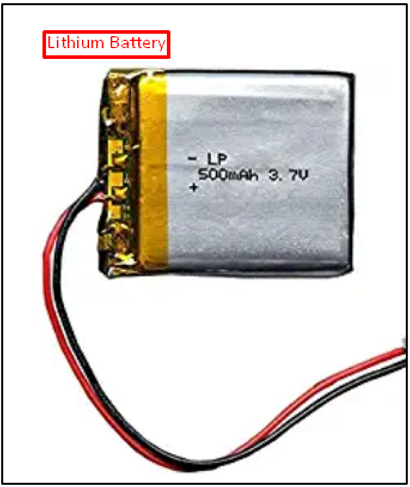Arduino belongs to the microcontroller family that allows its user to create different projects like fire alarms, security systems, home automation, automatic dispenser, and many more. Most of the time while coding the Arduino, the user power it through a PC/laptop by using the USB port present on Arduino. But if a user doesn’t want their project to be connected to a PC all the time and wants to make it portable, then in that case connecting Arduino to a battery is the best solution. In this article, we will answer what type of Battery is best suited to power Arduino projects.
Let’s get started.
Types of Batteries That can be Connected to Arduino
There are two possible types of batteries that are used to power an Arduino project without being connected to a laptop:
-
- Rechargeable Batteries
- Non-Rechargeable Batteries
Best Type of Battery to Power Arduino
If the user wants to go for a non-rechargeable battery, then a 9 V DC battery with a connector is good to go. You can shop connector and 9 V Battery here. But, Lithium-ion batteries are the best choice for those looking to power Arduino externally. They are the best because they are rechargeable and have a long life.
Lithium-ion Batteries for Arduino
If you are looking for Lithium-ion dry batteries for your Arduino project. Shop Here.
These kinds of batteries have great use in robotics, portable and wearable projects. The advantages of choosing Lithium-ion batteries for Arduino projects are enlisted below:
Advantages of Using Lithium-ion Battery for Arduino Projects
-
- Long Life: Lithium-ion batteries have a longer life compared to other batteries. 8-10 years is the average life span of a lithium-ion battery. Also, since it is rechargeable, you can charge it and then consume it repeatedly.
- Fast Charge: Charging a lithium-ion battery is not a hectic task at all. The average charging time of a lithium-ion battery is less and you don’t need to charge it more often.
- Easy to use: Lithium-ion batteries are easy and safer to use in comparison to other batteries. They are less reactive to air and water than other nickel batteries.
- Lightweight: Lithium-ion batteries are not very heavy weight. Li-Ion batteries are pretty much half of the weight of other Lithium-acid batteries.
- Less Reactive to temperature: Lithium batteries do not get affected by extreme temperature changes. Therefore, they are a suitable choice to be used in cold and deserted areas.
Drawbacks of Lithium-ion Battery
There are so many benefits of using Lithium batteries, but obviously, all advantages come with some cost. The biggest disadvantage of using a Lithium battery is its cost. The cost of a Lithium-Ion battery is a little more than the rest of the rechargeable batteries.
Alright, that’s it for this guide!
Conclusion
Lithium-ion batteries are the best choice to be used to power Arduino because of their durability, long life, and easy-to-handle properties. Also, the rechargeable feature of lithium batteries makes it easy for users to charge and use them multiple times. However, the cost of the battery may be a little higher than others, which might be a drawback of it. Still, it’s best if you pick it for your Arduino device.

